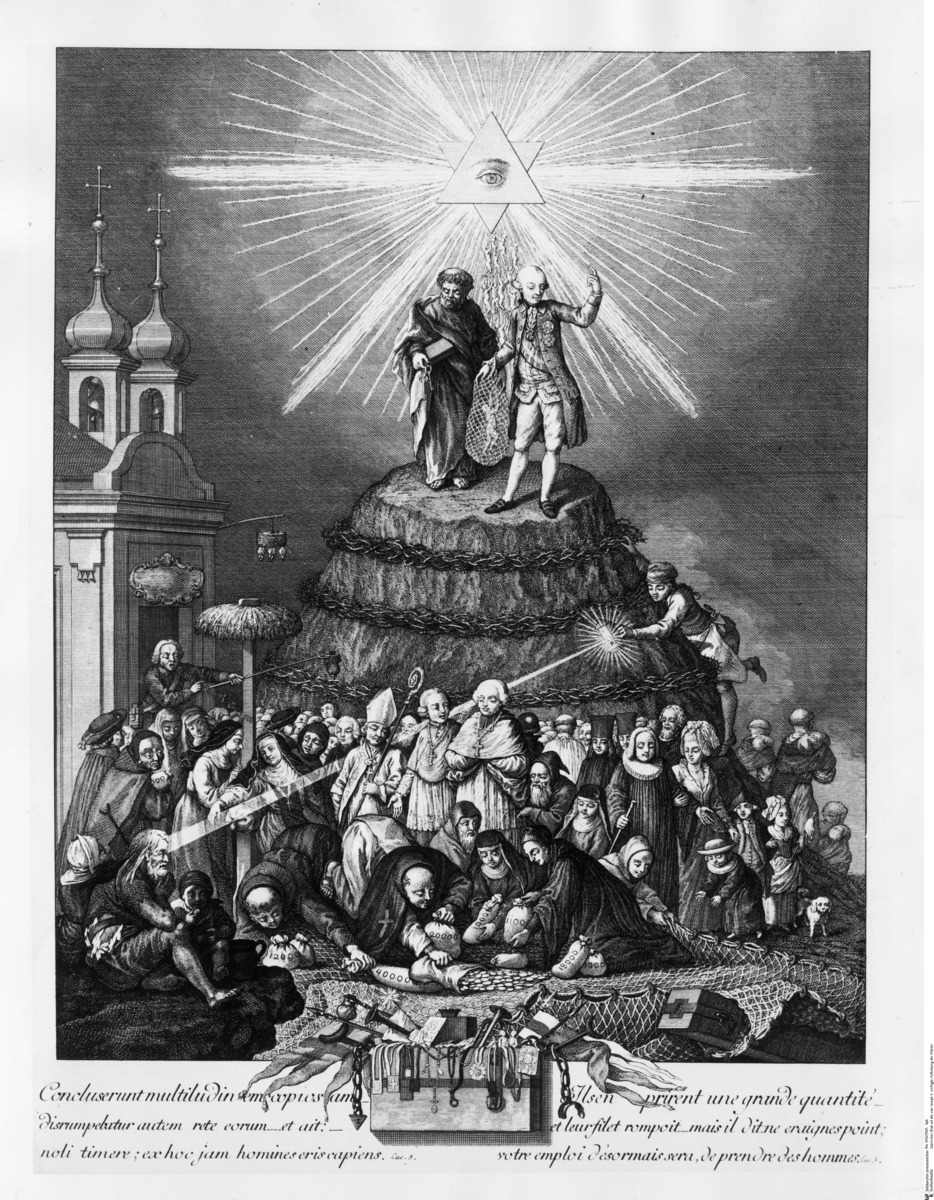Source

Source: bpk-Bildagentur, image number 30027635. For rights inquiries, please contact Art Resource at requests@artres.com (North America) or bpk-Bildagentur at kontakt@bpk-bildagentur.de (for all other countries).
Unlike his mother, Maria Theresa, Joseph II (r. 1765-90) pursued his reforms impetuously, antagonizing the nobility and the clergy with his centralist, secularizing, and anti-corporativist policies. Joseph II regarded monasteries as hotbeds of superstition and religious fanaticism and decided to dissolve them. Before doing so, he legally authorized the transfer of diverse church assets into so-called religious funds, which were to be used to finance education and poor relief. This image, a satirical treatment of Joseph's order to dissolve the monasteries, makes reference to Catholic traditionalists’ great resentment of the abolition of economically “unproductive” and socially inactive monastic orders and the nationalization of their property.
The image shows monks and nuns pouring gold on a type of honeycomb. The beaming eye in the Star of David may be both a slur against Joseph’s Edict of Toleration for the Jews and a representation the Enlightenment, whose ideas were despised in orthodox religious circles. Joseph stands on top of what appears to be a mountain wrapped in chains. It is most likely a representation of the “ultramontane” (i.e. across the mountains, or the Alps) Roman Catholic Church. A member of the clergy stands next to him. Copperplate engraving by unknown artist, c. 1783.

Source: bpk-Bildagentur, image number 30027635. For rights inquiries, please contact Art Resource at requests@artres.com (North America) or bpk-Bildagentur at kontakt@bpk-bildagentur.de (for all other countries).
bpk